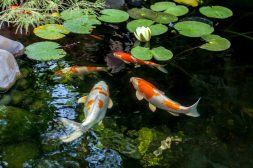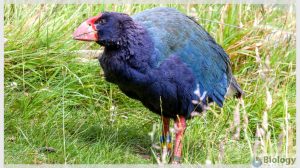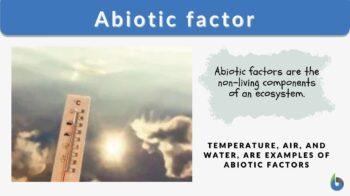
Abiotic factor
n., plural: abiotic factors
[ˌeɪ baɪˈɒt ɪk ˈfæk.tə]
Definition: nonliving components that impact the ecosystem
Table of Contents
An abiotic factor is a non-living element of the environment that influences the way organisms and ecosystems function. Some examples of abiotic factors in the ecosystem include sunlight, temperature, and nutrient availability. Many organisms have evolved to be able to function in the presence of these abiotic factors.
There are also organisms that can only survive in the absence of these factors, such as certain microorganisms that require a certain temperature range to grow.
Abiotic factors, also called abiotic components, are those nonliving components that impact the ecosystem, such as water resources. We can define abiotic factor in biology as a non-living part of an ecosystem that shapes the environment for living components.
An abiotic factor is a non-living chemical or physical factor in the environment, such as soil, pH, forest fire, etc. Abiotic factors may be grouped into the following main categories:
- Climatic factors, such as sunlight, humidity, temperature, atmosphere, etc.
- Edaphic factors, such as the nature and type of the soil, geology of the land, etc.
- Social factors, such as land use, water resources, etc.
Etymology: a- meaning “not,” “without” + biotic: Gk biōtikós of, pertaining to life; factor: late ME facto(u)r < L factor maker, perpetrator. Compare: biotic factor
What are the 5 abiotic factors?
The 5 main abiotic factors are:
1. Wind
The wind is also an important abiotic factor because it influences the rate of evaporation and transpiration. The force of the wind is also important because it can move soil, water, or other abiotic factors, as well as an ecosystem’s organisms.
2. Water
Is water abiotic or biotic? Water is also a very important abiotic factor. As someone said ‘No matter how much rich you are you can never live without water’. All organisms need water as their essential component. Water makes up 71% of the earth’s surface and some organisms are 95% made up of water.
3. Atmosphere
The atmosphere of the earth is something that sustains life. The oxygen that is used by living organisms (plants, animals, and humans) is taken from the atmosphere. The atmosphere is made up of four important layers (troposphere, stratosphere, ozonosphere, and mesosphere).
4. Temperature
Is temperature abiotic or biotic? Temperature is an important abiotic factor as the variations in the temperature cause variations in plants and animals. For example, yak lives in cold temperatures where the temperatures are low and camels live in hot temperatures where the temperature is high.
5. Chemical elements
All matter is made of chemicals and chemicals are important abiotic factors of the biological environment. For example, plants like Holly thrive in acidic soils. Some elements, like copper, are important micronutrients for many organisms.
For the full list of abiotic factors, see below:
- Sunlight
- Water
- Air
- Humidity
- pH
- Temperature
- Salinity
- Precipitation
- Altitude
- Type of soil
- Minerals
- Dissolved oxygen
- Mineral nutrients are present in the soil
- Tides
- Rain
Examples of Abiotic Factors
Abiotic factors examples are given below:
- Terrestrial ecosystem: In terrestrial ecosystems, examples include water (H2O), light, and temperature.
- Marine ecosystem: In the marine ecosystem, examples include ocean currents and salinity.
Different environments have different kinds of abiotic factors. Let’s have a look at different environments and their abiotic factors:
Desert abiotic factors
A Desert is an area of land that is apparently devoid of life. Abiotic factors in deserts include high temperature, poor water availability (lack of rainfall), and lack of moisture.

Tropical rainforest abiotic factors
The Amazon jungle is a rainforest. Abiotic factors in the rainforest include poor nutrient soil, humid air, heavy rainfall, and warm temperatures.
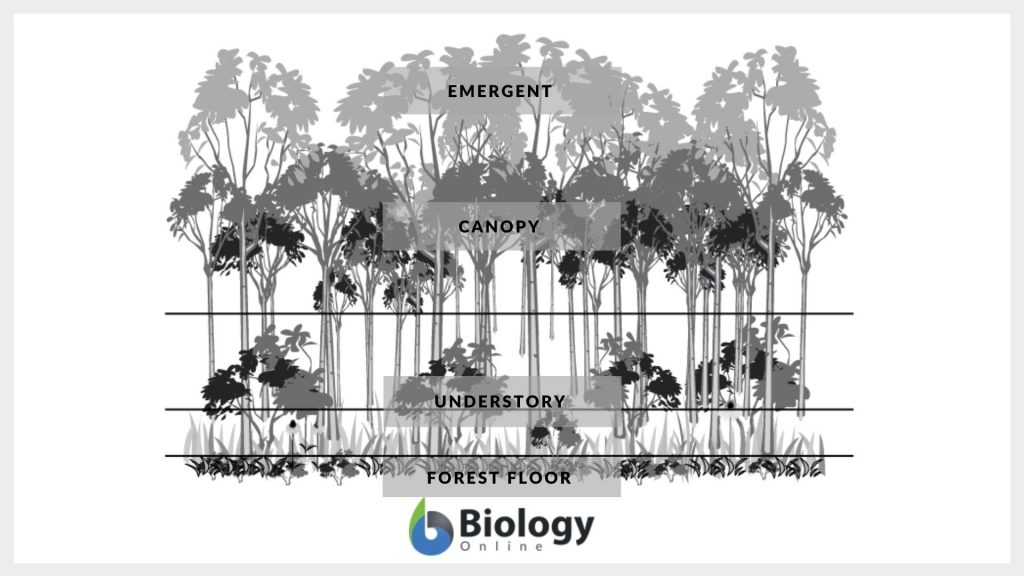
Tundra abiotic factors
Tundra is characterized by very low temperatures, creating a very cold desert. Abiotic factors in the tundra include low temperature, precipitation, cold wind, etc.

Abiotic factors in the ocean
The ocean is the body of salt water that covers 70% of the earth. Abiotic factors in the ocean include wind or water currents, nutrient availability, and a lot of moisture.

Abiotic factors in other ecosystems
Abiotic factors in the ecosystem are the factors that are responsible for the growth, reproduction, and maintenance of an ecosystem. Other environments have their own abiotic factors.
- Abiotic factors in the forest
A forest is a large area covered with trees, such as tropical rainforests, temperate forests, and boreal (Taiga) forests. Abiotic factors include temperature, sunlight, moisture, wind or water currents, soil type, and nutrient availability.
- Abiotic factors in savanna
Savana is characterized by small trees and grasses that do not form a close canopy. Abiotic factors in the savanna include lots of energy from the sun with fires and very little rainfall. The limiting factors in savanna include grazing animals, predators some trees with bushes and tall trees, and fungi to break on dead matter.
- Coral reef abiotic factors
The coral reef is an underwater ecosystem that is characterized by reef-building corals. Coral cannot live in water with a low number of salts and in cold water, the abiotic environmental factors in coral reefs are trash or pollution, rocks, minerals, and other non-living things in their ecosystem.
- Abiotic factors in grasslands
Grassland is an area in which the vegetation is dominated by huge covers of grass. Abiotic factors in grassland include climate, soil, topography, and natural disturbances also to determine the types of plants and trees precipitation is important.
- Abiotic factors in freshwater
As for lotic (river) and lentic (lakes and ponds) ecosystems, some of the most important abiotic factors are light, temperature, substrate, water chemistry, and flow. Light, in particular, will determine the zonation of a pond, for instance. In Figure 5, notice that a pond has a littoral zone (well-lit), limnetic zone (not fully lit), and benthic zone (bottom). The surrounding forests could also affect the water chemistry as the soil could erode and deposit in the nearby freshwater.
 | 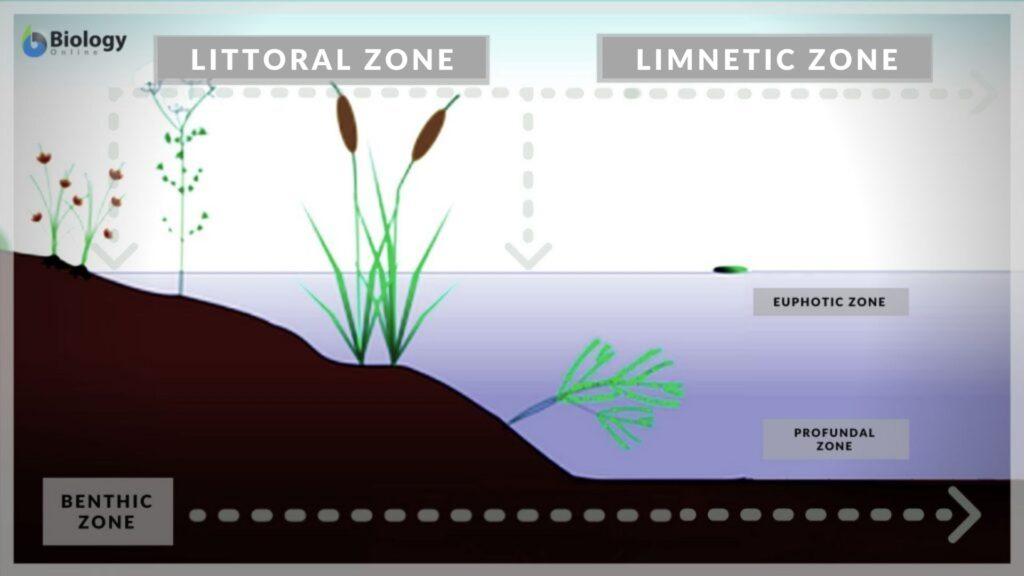 |
| Figure 5: Freshwater (left) and the typical structure of a lake ecosystem (right). | |
 | |
| Figure 6: Coral reefs are home to many aquatic animals | |
Human activity: pollution and the peppered moth
Human activity is not a natural abiotic factor but caused by humans. It includes the impact of pollution, waste, and drainage on the environment. The adverse effects of human activity are already recognized by most studies and efforts are set to minimize such impacts (e.g., human-induced impacts caused by land-use change), especially in the global ecology.
Some organisms have then served as indicator species, a species that indicates the conditions of the habitat for over some time. An example of that is the peppered moth that may be used as an indicator of the status of a particular environment in terms of pollution in the subsequent decades:
- A higher frequency of the light-peppered moth could mean the environment is slightly polluted.
- A lower frequency of light-peppered moths could indicate that pollution is beginning to accumulate in the area.
- A higher frequency of the dark peppered moth could mean high pollution in the local environment
Read more about it here: Industrial melanism (Tutorial).
Relative Importance of Abiotic Factors
Abiotic factors include all the nonliving things. Both biotic and abiotic factors are very much related to each other, even if we remove any one factor from these two the whole ecosystem will be affected. Abiotic facts are important because they directly affect how organisms survive.
- A community of organisms and their abiotic environment. Abiotic factors affect the ability to reproduce and give organisms the ability to survive. They help determine the types and number of organisms that exist within the environment. In fact, some abiotic factors are limiting factors especially when they affect population density.
- Can we live without the presence of abiotic factors? Life will be impossible without abiotic factors as they include all the nonliving things in our environment.
Abiotic Factors vs Biotic Factors
Let’s look at the difference between biotic and abiotic components.
Biotic and abiotic factors are two main categories of factors that influence the nature and state of an ecosystem. Biotic factors are those that have life whereas abiotic factors are those that do not have features of life. Biotic factors include all those living organisms, such as plants, animals, and microorganisms that make up the ecosystem. On the other hand, abiotic factors are all nonliving things in the ecosystem, such as the earth, air, water, and minerals that make up the environment in which the biotic factors live.
Relationship between biotic and abiotic factors in an ecosystem
The relationship between biotic and abiotic factors in an ecosystem has a profound impact on the nature and state of the ecosystem. In any ecosystem, both biotic (living) and abiotic (nonliving) factors play a vital role in determining the nature and state of the ecosystem. It is impossible to understand the nature of an ecosystem without recognizing the importance of both sets of factors.
Biotic and abiotic factors both play a very important role as they make up the ecosystem.
Table 1: Biotic factors and Abiotic factors | |
|---|---|
| Biotic Factors | Abiotic Factors |
| As the word bio means “life” the biotic factors are the living things present in the ecosystem such as humans, insects, animals, birds, plants, bacteria, and fungi. | While abiotic factors are the nonliving things present in the ecosystem. |
| They also contain producers, consumers, decomposers, and detritivores. | They depend on the ecosystem in which they are found |
| Biotic components originate from the biosphere. | Abiotic components originate from the lithosphere, atmosphere, and hydrosphere. |
| Biotic factors depend on abiotic factors for survival. | Abiotic factors don’t depend on biotic factors they are totally independent. |
| Examples of biotic resources are all flora and fauna. | Examples are air, water, salinity, humidity, precipitation, climate, sunlight, pollution. |
Common Questions About Abiotic Factors
Let’s learn more about abiotic factors by answering some of the common questions below.
Is water biotic or abiotic?
Water is abiotic because it is a non-living component of the ecosystem.
Is grass biotic or abiotic?
The grass is an abiotic component of an ecosystem because it is a living component of the ecosystem.
Is soil biotic or abiotic?
Soil is considered both biotic and an abiotic factor. It is biotic because soil also contains some living organisms and decaying particles of dead organisms, and abiotic because it is made up of mineral particles and rocks that are counted as non-living factors in the environment.
Is sunlight biotic or abiotic?
Sunlight is an abiotic factor and is the main source of energy on the planet earth.
Is temperature biotic or abiotic?
The temperature being a nonliving component is also abiotic.
Is oxygen abiotic or biotic?
Oxygen is also abiotic like water and is also very important for many living things.
Is light a biotic or an abiotic factor?
Light is an abiotic factor as it is not only responsible for plant growth but also essential for germination. Plant use light as energy to convert inorganic substances into organic materials.
Is space a biotic or abiotic factor?
Space is an abiotic factor because it includes nonliving parts of the ecosystem like the moon, sun, etc.
What are bad abiotic factors?
Bad abiotic factors are those factors that could lead to abiotic disorders, such as drought stress, sunscald, freeze injury, wind injury, chemical injury, nutrient deficiency, overwatering plants, etc.
What is abiotic stress?
The negative effects of nonliving factors on living things are called abiotic stress. If abiotic factors combine with abiotic stress factors, they become very harmful. Abiotic stress has enabled other species to grow though as it affects the weakest group of organisms. Examples of such factors are high winds, floods, extreme temperatures, natural disasters such as tornadoes, etc.
What are abiotic interactions?
Abiotic interactions are exemplified by plants and their interactions with their environment by the way they use water, sunlight, and carbon dioxide (for photosynthesis).
What are abiotic elements?
Abiotic elements are the abiotic components that include the nonliving resources that affect the living things or living organisms for their growth, reproduction, and maintenance.
What are the limitations of abiotic factors?
The following are the limitations of the abiotic factors:
1- Extreme abiotic factors reduce the biodiversity of an ecosystem.
2- Biotic factors will be affected (abiotic factors define which organisms are able of living in a specified place and biotic factors will if and how an organism can live in a specified environment).
Try to answer the quiz below to check what you have learned so far about abiotic factors.
Further Reading
References
- Ment, D., Shikano, I., & Glazer, I. (2017). Abiotic factors. Ecology of invertebrate diseases, 143-186.( IGlazer, 2017 )
- Neuvonen, S., & Virtanen, T. (2015). Abiotic factors, climatic variability, and forest insect pests. Climate change and insect pests. CAB International) (Wallingford, 154-172. (Neuvonen,2015)
- Clavijo McCormick, A. (2016). Can plant–natural enemy communication withstand disruption by biotic and abiotic factors?. Ecology and Evolution, 6(23), 8569-8582. (Clavijo Mccormick 2016)
- Kumar, R., & Kumar, V. (2018). A review of phylogeography: biotic and abiotic factors. Geology, Ecology, and Landscapes, 2(4), 268-274. (Kumar,2018)
©BiologyOnline.com. Content provided and moderated by Biology Online Editors.



